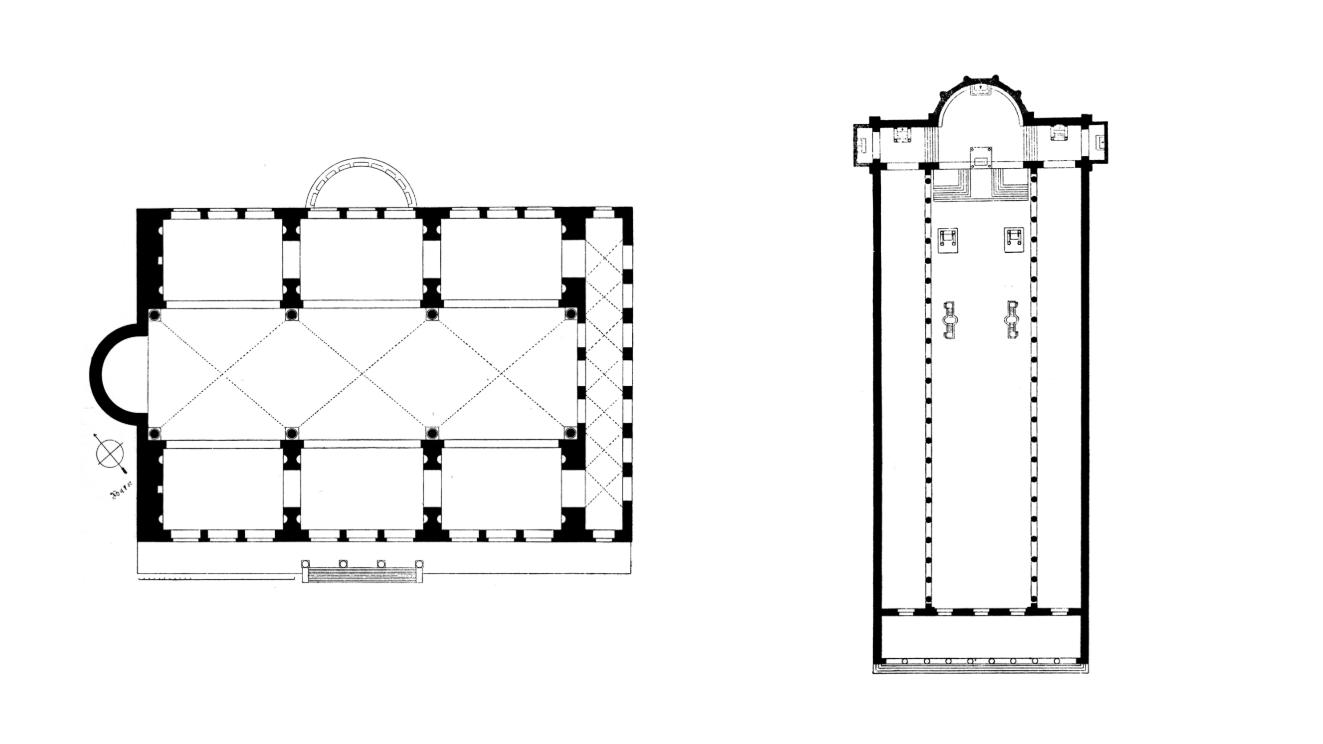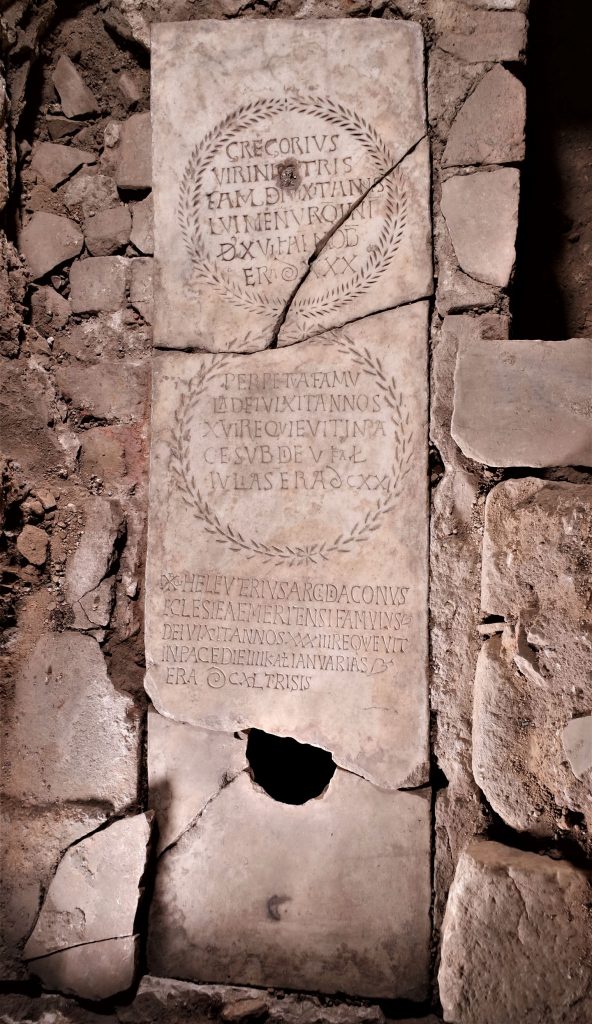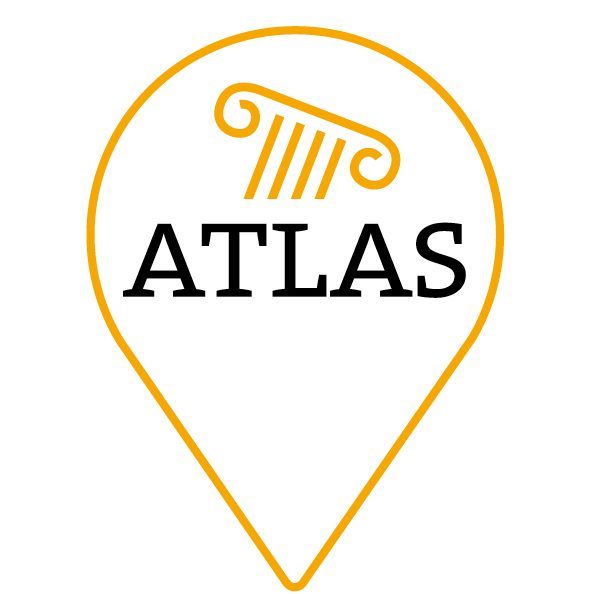The ATLAS project is designed, as you know, as a comparative and interdisciplinary research. Comparative between several study regions and cities, and interdisciplinary because of the integration of different sources and types of evidence. We already had the opportunity to present this methodology to you a few months ago. This time we return to it with a blog post dedicated to the analysis of a specific type of building, the basilicas. Although ours is not an exclusively architectural study, as you can imagine. These buildings contain many other evidences whose analysis allows us to understand them in a global way, also as a reflection of the social and religious aspects of Late Antiquity.
But let’s start at the beginning, what is a basilica? In Roman times basilicas were public buildings, usually located in the forum area of cities and used for multiple functions, especially for the administration of justice or as a meeting place to discuss civic community affairs. This is most probably the origin of the Christian basilicas, or churches, which are the ones we are concerned with here today. The social, political and religious changes that took place during Late Antiquity led to the disuse of civic basilicas, but their architectural and functional tradition was maintained, with certain innovations, in the buildings that then housed the meetings of the (Christian) community.

In the framework of our project we have come across many Christian basilicas, some better preserved than others, some with more epigraphic data, others with more archaeological data. For the interdisciplinary and comparative study we are proposing, we need similar examples for which we have good data, both in quantitative and qualitative terms. For this reason, we will focus mainly on those basilicas which, in addition to having been the object of specific archaeological studies, also have a good volume of inscriptions accessible through databases or epigraphic works of reference. Specifically, we are going to analyse the basilica of Melleus in Haïdra (Ammaedara), that of Hildeguns in Makthar (Mactaris) and that of Saint Eulalia in Mérida (Emerita). All of them meet the above requirements and, in addition, have dozens of tombs and epitaphs in or around them, i.e. they are funerary basilicas. This particularity allows us to provide our study with a social perspective, either through the human remains or through the funerary inscriptions. Thus, in addition to asking about the location of the basilica within the topography of the city (within or outside the walls, near or far from the ancient centres of power) or about the orientation of the building itself (perhaps linked to religious changes), at the micro-spatial level we can ask ourselves about the position of the tombs within or next to the basilica and examine questions of a social nature, such as the age, gender or social position of the people buried. But at the same time, we can also observe their development over time, taking into account the chronological differences in the epigraphs and the architectural evolution of the buildings themselves.
However, as we shall see, these questions are sometimes easier to ask than to answer. In studying these buildings we are faced with several challenges, one of the most obvious of which is whether the basilica is still in use. In this respect, the fact that the basilica of Santa Eulalia has been excavated is quite unusual. It is a functioning church to this day, so obtaining permission to excavate its interior, where presumably the tombs of local saints could also be found, is not at all straightforward. Unfortunately, those basilicas that are no longer in use also have their own drawbacks. These buildings have often been used as ‘quarries’ in later periods, i.e. their materials were reused to construct new buildings and therefore often involved the destruction or at least the alteration of the stratigraphic record.

Even so, it is interesting to note that the epigraphic register of the basilica of Melleus in Haïdra is better preserved than that of Saint Eulalia in Mérida, and for precisely the same reasons. As the church of St Eulalia remained in use and maintained the martyr’s memory, its religious relevance was maintained and so was the interest in burial inside it. So, in order to place these new tombs, the previous ones were affected and even displaced. As a result there is only one epitaph in the santa Eulalia found in situ: the triple inscription of Gregorius, Perpetua and Heleuterius. The basilica of Melléus, on the other hand, was abandoned and went largely unnoticed in the face of the scale of other monumental buildings in Haïdra, so that fortunately its archaeological record was preserved until the first excavations at the beginning of the 20th century.

Despite the problematic nature of the location we can study the epigraphy for a multitude of parameters. Just by turning to the carrier or object on which the inscription is found tells us a lot. The funerary inscriptions can be, amongst others, lids of sarcophagi, small plaques covering a niche, or standing stelae. This already gives us information on the funerary method. Similarly we can turn to the materiality, what type of stone was used, a local stone or a piece of marble coming from far away? After establishing the object we can turn to the text, this can yield quite some information and raise even more questions. We already treated the issue of the locus inscriptions in the ‘Basilique de la Citadelle’ in Haïdra, for which it remains uncertain to what they refer. However, before reading the text we have the option of gaining information. At the shift from the Imperial period to Late Antiquity we find christian iconography adjoining the text. We can think of clear symbols like the cross, the staurogram or christogram, but also less clear iconography could be used like doves and fish.
Now after studying all elements but the text, it is time to turn to the text itself. Funerary inscriptions are very formulaic, that is to say they follow a rather standard pattern with standard wording. We have several phrases we encounter in funerary inscriptions: D(is) M(anibus) S(acrum), meaning sacred to the Manes (the gods of the dead), is a standard starting formula. Often associated with non-Christian inscriptions, however, as an integral part of funerary inscriptions for a long time it continues to be used in clear christian inscriptions for quite a while. Several of the clear christian inscriptions in the basilica of Hildeguns in Mactar still start with DMS, for example the cleric Rogatus was interred in the basilica with a limestone slab covering the grave and carrying the following inscription:
D(is) M(anibus) S(acrum)
(Greek cross)
Rogatus cleri-
cus fidelis bixit
in pace annis bi-
ginti q(u)inq(u)e men-
ses q(u)atuor (h)ora-
s septe
The inscription is clearly a christian one, as we find the Greek cross and the fact he is a cleric. Within the text we find more hints to the christian nature. Fidelis, faithful, is often found in christian funerary inscriptions, most likely indicating that Rogatus was baptised. Similarly to the formula in pace. Seemingly, Rogatus, or his relatives, kept close watch on his age: he was 25 years old, four months and seven hours. It has been argued that such precise indication testifies to the short life, it was worth noting the hours he lived as he lived so shortly. The age at death is more often recorded in christian inscriptions, as it marks the transition from life on earth to life in heaven. As a result we also find plus minus indicating an estimation of age, when uncertain.
Clearly such data, as the name, position and age, can give us insights into the people buried in the churches. We can ask questions regarding age, gender, gender distribution, function and chronology. The latter is possible when we have either the era or indiction (time recordings in Late Antiquity) or using indirect ways of reconstructing the dating, based on palaeography (the way it is written) or the archaeological context. With such dating we can observe chronological shifts in patterns, the changes in the burial customs over the ages the churches were in use. However, we must keep one major caveat in mind, epigraphy is strongly biassed. Not every person could afford an inscription, or even have the right to be buried within the walls of the basilica. As such we must be careful drawing conclusions for the population of the cities under study. Nonetheless, keeping in mind the limits of archaeology and epigraphy we can observe new patterns and understand the use of the basilicae in Hispania and Africa in Late Antiquity just a bit better. In the near future we hope to publish an article on this topic. It is work in progress for now. Follow our social media to see our happy faces when the publication is out!
